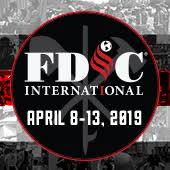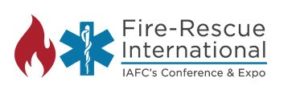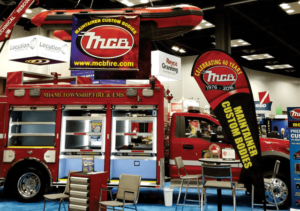By: Robert Avsec, Executive Fire Officer
Note: I originally posted this article back in 2014 and I’ve updated it for everyone’s benefit.
Begin with the end in mind.—Stephen Covey, “7 Habits of Highly Effective People”
I know that there are fire service conferences being presented just about year-round, especially at the state and regional levels. And two of the biggest conferences in North America—which both draw firefighters and officers from around the globe–are fast approaching: FDIC 2020 in Indianapolis, Indiana, April 20-25 and FRI 2020 in Phoenix, Arizona, August 19-22.
of the biggest conferences in North America—which both draw firefighters and officers from around the globe–are fast approaching: FDIC 2020 in Indianapolis, Indiana, April 20-25 and FRI 2020 in Phoenix, Arizona, August 19-22.
Your attendance at either or both of those conferences represents a significant amount of investment of both time (yours) and money (your department’s). To get the most out of both, it’s useful to do some planning beforehand. And not just planning what you want to see and do at the conference, but what you want to be able to do when you get back home.
Because you know what it’s been like after attending conferences in the past, right? Welcome home! You’ve just returned from a regional or national fire service conference and now it’s your first day “back on the job”. What did you wind up doing?
Most likely, you dove into that mountain of work that had accumulated in your in-boxes (both electronic and “snail mail” genres) and communicating with your direct reports to find out what had happened while you were gone (Which you probably already knew about thanks to your “electronic leash”, aka, your smartphone).
So, let’s see how it can be better this time.
Fire Service Conference ROI
What are your reasons for attending said conference in the first place?
- Networking for both you and your department? (Come on, we can be honest here, right?).
- Attending classes or presentations for your professional development?
- Engaging with vendors about future purchases?
There are two terms that I believe are very important: ROMTI (Return on My Time Invested)  and ROTIIY (Return on Their Investment in You). The former is your personal time investment while the latter is the resource commitment from your bosses (travel expenses, conference fees, meals, etc.).
and ROTIIY (Return on Their Investment in You). The former is your personal time investment while the latter is the resource commitment from your bosses (travel expenses, conference fees, meals, etc.).
Before you go
What do you want to do with the information, insights, and experiences you’ll gather during the conference? Right, share them! That’s how you can increase both your ROMTI and ROTIIY. Here are three suggestions for what you want to be able to do on your first day (or first couple of days) back on the job.
- Be able to sit down with that smartphone or your computer and record a short video for your people describing your experience; call it a public “brain dump”. You’ll likely have a lot of things you’ll want to say, but stay focused on addressing the message, “What’s in it for me?”, from the perspective of your people. What did you learn or who did you meet or what vendors did you engage that can have a positive influence on you and your people and your department?
Perhaps a new program you learned about from another fire chief? Some new technology that will make life easier for your medics to record patient care information? An innovation in fire apparatus or communications technology or…any information that will help give your people the impression that their fire chief attended the conference and it was not an all-expense paid vacation.
You’ll want to be able to distribute that video as soon as possible to your fire stations and other work units along with an invitation for your personnel to send back any questions they have after watching the video. You’ll record those questions and combine them with the information collected in the next suggestion.
- Sit down with your staff and have them conduct a “debriefing” session with you. Have one of your staff members serve as the facilitator who records your responses to questions asked by other staff members. Such a debriefing can serve as a type of “brainstorming” session that might lead to future projects for making improvements in your organization.
It can also serve as a powerful reinforcement tool: Hearing about how other fire and EMS departments have done things with success that your department has already done can give everyone a bit of a boost! (And who couldn’t use a little of that?)
- After you’ve collected that data from Steps 1 and 2 , you’ll want to schedule a work meeting with your staff to look back at that data to see if there are any potential items that you and your staff feel should be pursued for making improvements in your department.
These three steps are more than just individual or group tasks. Collectively, they constitute leadership and mentoring on your part. By doing so, you’d also be creating expectations for attendance at future conferences by you and members of your department.
doing so, you’d also be creating expectations for attendance at future conferences by you and members of your department.
Knowing what those expectations look like can have a positive impact on how you and other members of your department when they attend future conferences or seminars or symposia. And that would make all of you better “Conference Commandos!”
 Fire & EMS Leader Pro The job of old firefighters is to teach young firefighters how to become old firefighters!
Fire & EMS Leader Pro The job of old firefighters is to teach young firefighters how to become old firefighters!